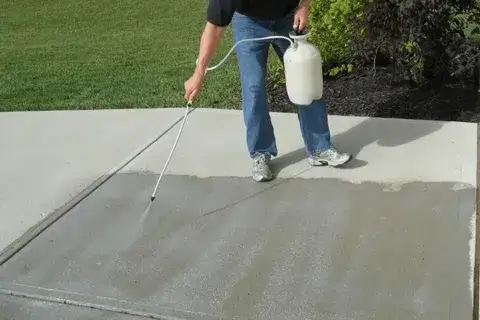Concrete is a ubiquitous building material renowned for its strength and durability. Whether you have a concrete driveway, patio, sidewalk, or garage floor, sealing it is a smart investment that can transform the appearance, safeguard against deterioration, and prolong its life. In this comprehensive guide, we’ll delve into the significance of concrete sealing, its advantages, the methods for application, and expert tips to ensure your surfaces stand the test of time.
Understanding the Importance of Concrete Sealing
Concrete, despite its robust nature, is inherently porous. This porosity makes it vulnerable to a range of issues, including:
- Moisture Intrusion: Unsealed concrete readily absorbs water, which can lead to cracks, surface erosion, and even structural damage over time.
- Staining: Substances like oil, grease, and chemicals can penetrate the surface, causing unsightly stains that are difficult to remove.
- Surface Erosion: Weathering, freeze-thaw cycles, and UV exposure can cause surface deterioration, leading to a worn and aged appearance.
Concrete sealing serves as a protective barrier, preventing these problems and preserving the structural integrity and aesthetics of your concrete surfaces.
Benefits of Concrete Sealing
- Enhanced Durability: Sealing concrete reinforces its resilience, making it more resistant to moisture, abrasion, and chemical damage, thereby extending its lifespan.
- Stain Resistance: Sealed surfaces are less prone to staining, making cleaning and maintenance significantly easier.
- Improved Appearance: Concrete sealers can enhance the surface’s visual appeal by providing a glossy or matte finish, enriching the color, and creating a polished look.
- Reduced Maintenance: Sealed concrete requires less frequent cleaning and maintenance, saving you time and effort.
Methods for Concrete Sealing
There are primarily two methods for sealing concrete:
- Penetrating Sealers: These sealers penetrate the concrete’s pores, creating a protective barrier from within. They are ideal for exterior surfaces, allowing the concrete to “breathe.” Penetrating sealers come in water-based or solvent-based forms.
- Film-Forming Sealers: These sealers create a visible film on the concrete’s surface, offering a glossy or matte finish. They are excellent for enhancing aesthetics. Common types include acrylics, epoxies, and urethanes.
Expert Tips for Successful Concrete Sealing
- Surface Preparation: Thoroughly clean the concrete surface, removing dirt, stains, and contaminants. Repair any cracks or imperfections before sealing.
- Appropriate Equipment: Choose the right applicator for the sealer type—rollers, brushes, or sprayers—to ensure even coverage.
- Weather Considerations: Pay attention to temperature and weather conditions. Optimal application conditions typically range from 50°F to 90°F (10°C to 32°C) with low humidity.
- Multiple Coats: Apply multiple thin coats of sealer instead of a single thick coat for better coverage and durability.
- Curing Time: Allow the sealer to cure according to the manufacturer’s instructions. Avoid foot or vehicle traffic until the sealer has fully cured.
Conclusion:
Concrete sealing is an essential step in preserving the longevity and aesthetics of your concrete surfaces. Whether you’re looking to protect your driveway, patio, or garage floor, the advantages of sealing are undeniable. By following recommended methods and expert tips, you can enjoy long-lasting, resilient, and visually appealing concrete surfaces that enhance the overall value of your property.

